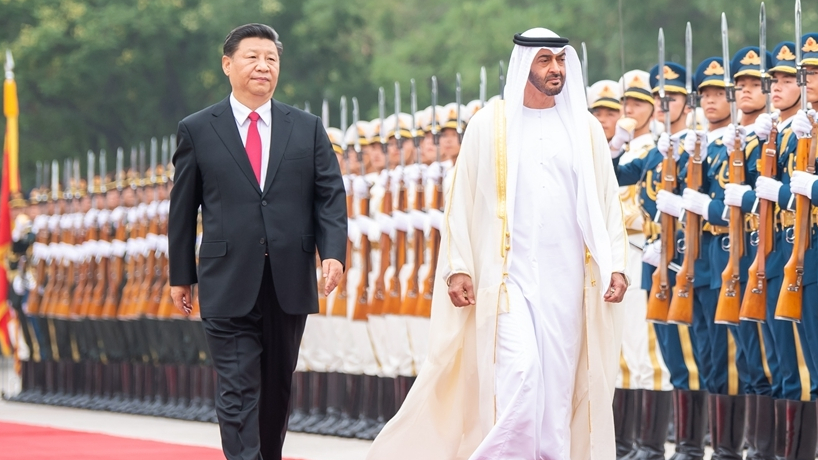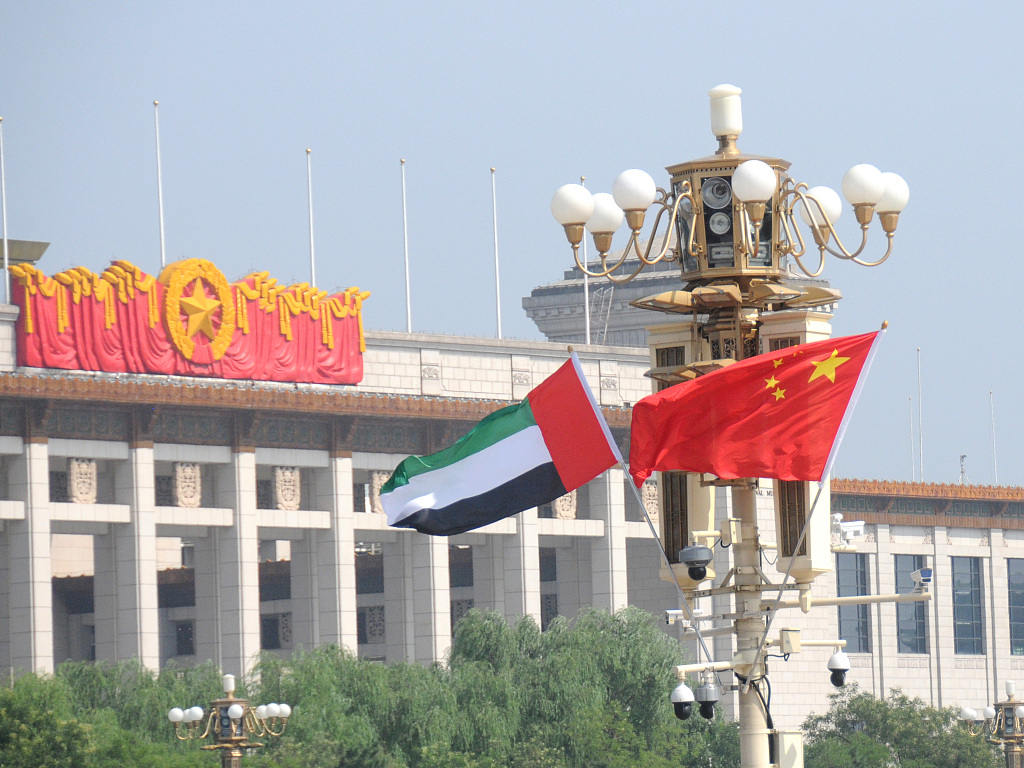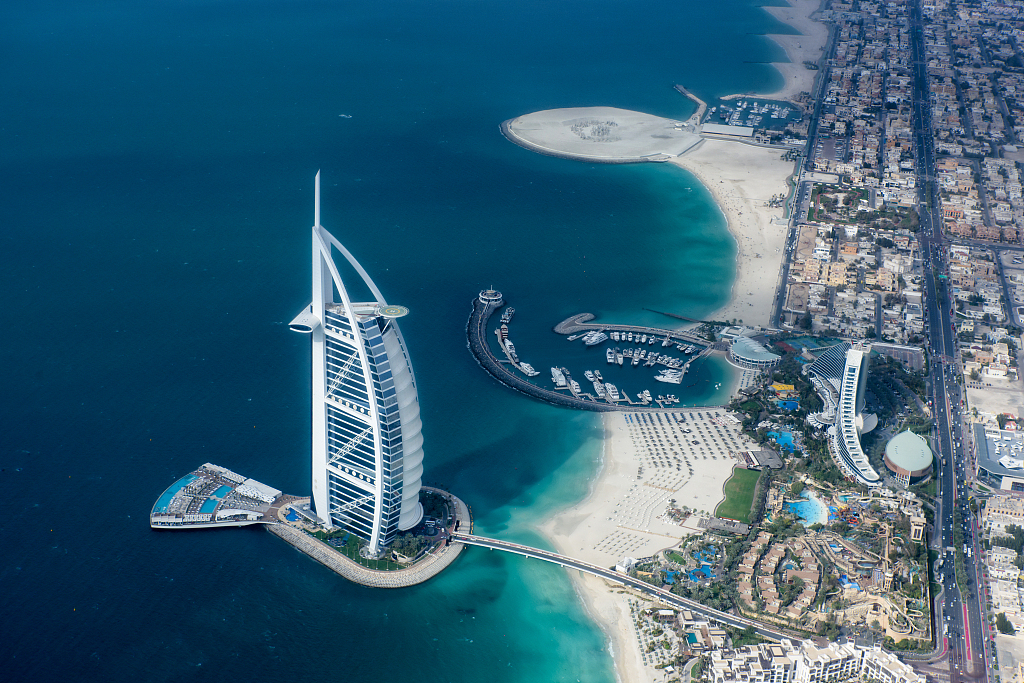

Editor's note: Tom Fowdy, who graduated with an MSc in Chinese Studies from Oxford University and majored in politics at Durham University, writes on the international relations of China and the Democratic People's Republic of Korea. The article reflects the author's opinions, and not necessarily the views of CGTN.
Chinese President Xi Jinping held talks with Sheikh Mohammed bin Zayed Al Nahyan, Crown Prince of Abu Dhabi at the Great Hall of the People in Beijing on July 22. The prince's objectives were quite clear in this arrival: to solidify ties between the two nations and formulate a path of coordination through the Belt and Road Initiative (BRI). The UAE has become just one of a number of Arab Gulf states to join the scheme, with Saudi Arabia, Qatar, Bahrain and Kuwait having pledged their support to it. Only last week did all of these countries team together to offer support to China in the face of western criticism pertaining to Xinjiang.
Speaking of the BRI, the Prince expressed hope that his country can "become one of the pinnacle regional territories" of the BRI, "which will accelerate that development as a hub for growth in trade not only between China and the Middle East, but also beyond". He further expressed hopes that Chinese small and medium enterprises would increase their investment into the Middle East and North Africa, setting a goal for bilateral trade between the two countries to accelerate to 70 billion U.S. dollars by 2020.
Why has growing relations with China become so important for these countries? The answer lies within geography and economics. This particular group of countries on the Persian Gulf have built their economies around the export of energy and relations with the west. However, as global markets are posed to change in the long term, it is pivotal to their security to re-calibrate their economic options and in turn take advantage of their strategic position as a connecting bridge between Europe, Africa and Asia. As a result, the BRI could not be more in their national interest to engage with.

The flags of China and the United Arab Emirates are displayed at Tiananmen Square in Beijing, July 22, 2019. /VCG Photo
How do we understand the politics of the Persian Gulf? The states of Saudi Arabia, Qatar, Bahrain, the UAE and Kuwait were Monarchies established in the early 20th century following the disintegration of the Ottoman Empire and then the later withdrawal of British protectorates within the region. As the prominence of automobiles grew around the globe, the discovery of vast oilfields within the area would make it strategically significant.
British and American authorities made deals with the local rulers offering them regime security in exchange for unfettered access to energy supplies, giving rise to what is described as the "rentier" state model, whereby associated states in the Gulf built their political orders around the sustaining of lucrative oil and gas revenues, thus seeing them emerge as the incredibly wealthy nations we know them as today.
However, the world is changing. With the environment in view, many countries are aiming to move away from petroleum vehicles, with many European countries implementing future bans. With the backbone of the Gulf economy based on energy exports, such countries must now look to diversifying their economies with a view to the long term future, remaining strategically relevant. That means new options and strategies must be considered.
This is where the BRI comes in. The Middle East in geographic terms is a bridge region. It is unique as it connects three continents together in proximity: Europe, Asia and Africa. This has already made the region highly significant in terms of transit: observe how Dubai airport has become the world's busiest airport by traffic due to sitting between the East and West. Qatar is catching up too. Taking advantage of this geography, Doha and Dubai are also becoming increasingly lucrative for tourists and duty-free shopping. But there is more to be done.

Landscape in Dubai. /VCG Photo
As a result, the Belt and Road initiative allows the Gulf States to place themselves in the middle of newly emerging intercontinental trade and finance networks that facilitate increasing links between the three continents. If their days as energy exporters are numbered, they are now investing heavily in the new opportunity of becoming "silk cities", that is areas which sit in the middle of and benefit from new routes of investment and commerce, thus emulating the Silk Road of old whereby trade from East Asia heading westwards passed via the Middle East.
This is why, for example, Kuwait is now working with China to build a new port, whilst also Saudi Arabia is also investing projects heavily in the China-Pakistan Economic Corridor. The overriding goal in each sense is to diversify and amplify the strategic relevance of their economies; there is no greater opportunity for that than the BRI.
With this vision in mind, a new chapter is now opening up in China's relations with the Arab World, one which challenges the West's traditional monopoly over the region. As Beijing seeks to diversify its markets and overcome the impact of the trade war, the monarchies of the Gulf are welcoming it gladly with the long term goal of becoming new trans-continental pivots in trade, transit and investment.
(If you want to contribute and have specific expertise, contact us at opinions@cgtn.com.)

Copyright © 2018 CGTN. Beijing ICP prepared NO.16065310-3
Copyright © 2018 CGTN. Beijing ICP prepared NO.16065310-3